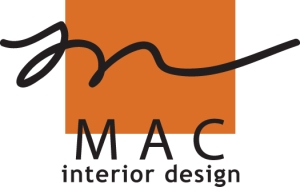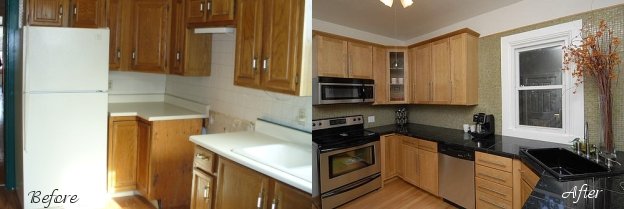A Look into the Business of Interior Design
If you are creative and have a keen eye for design and patterns, you might also feel that the idea of starting an interior design business is a favorable one. While the passion might be there, it takes knowledge and skill to really get a business going. While I can’t help you acquire skill, I can offer a little knowledge in the form of Susie McKenzie.
 Susie is the founder of MAC Interior Design, which she launched in June of 2008. MAC is a full-service interior design company that does everything from simple “face-lifts” of residential spaces to hospitality hot spots. For several years prior to starting MAC, Susie was a partner in another interior design business, Infinite Interiors.
Susie is the founder of MAC Interior Design, which she launched in June of 2008. MAC is a full-service interior design company that does everything from simple “face-lifts” of residential spaces to hospitality hot spots. For several years prior to starting MAC, Susie was a partner in another interior design business, Infinite Interiors.
What inspired you to get into interior design?
Well, this might sound crazy, but I feel energy in a space and I have the ability to manipulate it. I remember walking into amazing hotels or homes or clubs or spas—you name it. And knew that I wanted to be able to create these experiences for others as they live or work or travel in their environments. It’s truly amazing how much our environments affect us on a subconscious level.
What is your average day like?
No one day is the same. I might work with from one to three or four clients, depending on where each of their projects is at and what needs to be done for the week. Daily tasks include searching for furnishings or fabrics, lighting, hardware, accessories. I draw up space plans, put together color palettes, and get bids on installations depending on the scope of the project. This job is somewhat like real estate (if you want to cater to your clients anyhow) and it requires me to work evenings and some weekends.
What are some of the lessons you have learned along the way?
I have learned that it’s important to give added value in all that you do. In a service industry, where people are paying for thoughts, ideas, and time, it is important that you let the client know all the services you are providing them. I also think it’s important to bring the client along from time to time when working on their project so that they can have a true appreciation of how the creative thought process works and brings the design together for them.
If someone was thinking about starting their own business within this industry, what would you recommend they do?
I would recommend they first and foremost work with a few clients to see how they like it and to see if they can bring the business in. The industry is often glamorized. While it is innovative and exciting, there are a lot of menial tasks required that aren’t always easy to pass off to others. I think they need to determine whether they like working alone or in a team. They should try to structure their business for how they work best. It’s also important to find sources and industry partners. Building relationships within the industry helps, too.
If you’ve been a designer for another firm or firms, I would sort out the processes that you do and don’t like from your past experience. Model your business after one that has already been proven to work. Lastly, never turn any business away. You never know what a small job might lead to.
Any insider tips that you’re willing to share?
Some rules of thumb…
When selecting several fabrics for one space or item, the textures and patterns need to compliment each other. Choose one large pattern or solid, one medium pattern, and one small pattern. Use less of the busy pattern.
Strong accent walls are on the “outs” and subtle, light, and creamy colors from floor to ceiling are coming back “in.”
When accessorizing, make sure you have different shapes and heights grouped together unless you’re going for a repeat pattern. Also, you typically want to group things in odd numbers, not even. For example, use 3 or 5 candles across a mantle.
Work according to the “rule of thirds.” That is, everything in nature is proportioned in thirds. and so should interior design. I can usually eyeball it, but if you’re not sure where to make a break off a line or where to put a border or hang a picture, try breaking up the surface into thirds and using the imaginary lines as guides.
What type of interests might someone have that would go well with this kind of business?
The interests are so broad it’s tough to pinpoint a few. I would say important skills for designers to have are the following: analytical, creative, objective, personable, and decisiveness. Hobbies of many designers I know are: photography, other art forms, theater, traveling, and spending time in nature.
